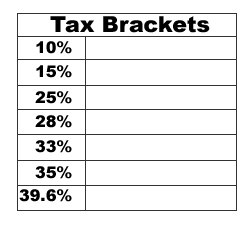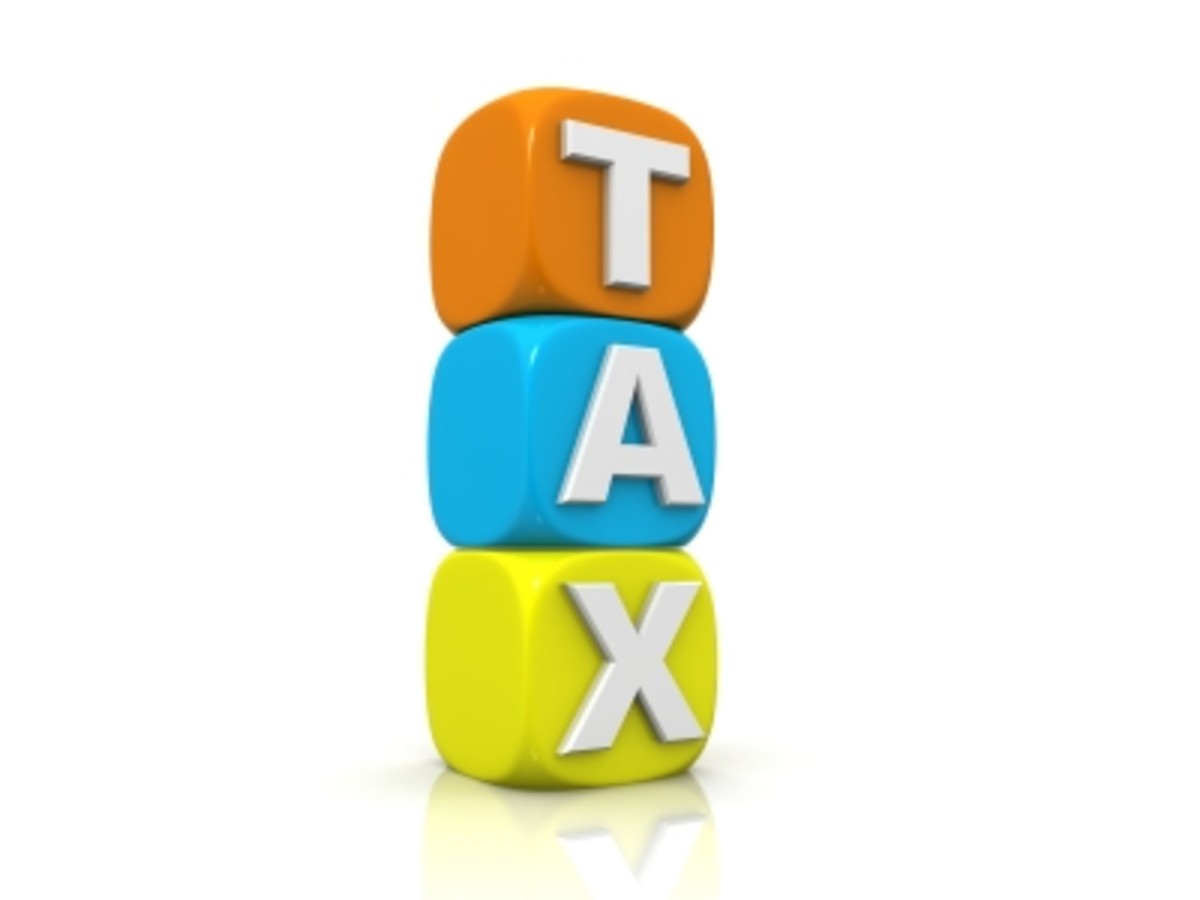Understanding Tax Brackets

Savings – Beyond the Basics
We will assume that you have a job and make more money than you spend. You have a budget for your day-to-day living expenses. You have also managed to put some money away for a rainy day or if a good deal comes your way. It is time to make some decisions about savings. Remember, savings make up the difference between what you make and what you spend.
Planning for the Long Term
You could simply continue to pile more money into your emergency fund and that is certainly no bad strategy. However, since the primary purpose of your emergency fund is mostly short-term, shifting to a more long-term strategy can pay off in substantial ways. That also means that life suddenly became a lot more complicated. Maybe that is why so many get this wrong. You are not one of them because you are reading this.
Tax Planning for Beginners
Many of your financial decisions have tax consequences, a very good reason to spend some time learning about them. Of course, I am not suggesting you should cheat on your taxes. No, but it may come as a surprise to you that some tax laws have actually been designed to help you save. There is nothing wrong with trying to save on taxes. In fact, it is even encouraged. Why not learn to take advantage of these opportunities?
It is quite possible that taxes will be one of the largest expenses you will have in your lifetime. It pays to understand how it works. After all, that is one way the rich are rich and we are not - yet.
For simplicity, we will assume that you are single and cannot be claimed as a dependent on someone else's tax return. In other words, you are an independent adult. The focus here will be on your federal income taxes, but you probably will have to pay many other kinds of taxes such as state income tax, state and local sales tax, perhaps even property tax.
The Tax Brackets
The federal tax system is progressive. This means that some people pay more than others. People who make more money pay more than people who make less. This may seem unfair to rich people, but it ensures that the strongest carry the heaviest burdens in our society.
The progressivity is achieved through tax brackets, where a certain tax rate is applied to a certain level or bracket of income. The Internal Revenue Service (IRS) publishes the new tax brackets once a year based on developments in consumer prices of goods, the Consumer Price Index (CPI).
For 2016, the tax brackets look like this for a single person:
When you make $0 - $9,275, you pay 10% in tax
From $9,276 - $37,650, you pay 10% on the first $9,275 = $927.50 (10% of $9,275) plus 15% of the rest
From $37,651 - $91,150, you pay 10% on the first $9,275 = $927.50 plus 15% on the next $28,375 ($37,650 - $9,275) plus $25% of the rest
and so on. The table ends with 39.6% of everything over $415,050.
See the Actual 2016 Tax Brackets here.
Can you see how this complicates matters a great deal. Calculating your tax is not as simple as multiplying your income with your tax rate. You will not have to pay 25% ($10,000) of your $40,000 income.
Calculating your tax
Here is how you would calculate your tax:
You would pay 10% on the first $9,275 = $927.50
You would pay 15% on everything between $9,276 and $37,650 = ($37,650 - $9,275) x 15% = $4,256.25
You would pay 25% on everything between $37,651 and $40,000 = ($40,000 - $37,650) x 25% = $587.50
So the total tax on $40,000 is $927.50 + $4,256.25 + $587.50 = $5,771.25, not $10,000.
But it gets worse, because the income you see on your paystub is not your taxable income. It is your gross income and that makes a big difference.
Tax Brackets Explained
Tax Return Form 1040
We need to take a look at your tax return. Get a copy of form 1040 at irs.gov. It is quite possible that this is the first time you have ever seen a tax return even if you have filed your taxes yourself before. Some tax preparation software programs tend to hide it for you displaying only the small part you are working on at a time. It pays to become familiar with the form. I think you will have a better understanding of what tends to increase your tax and what tends to lower your tax, so let us take a look at it.
The first thing you should notice about it is that it is divided into sections by some horizontal lines and some section headings in boldface letters. Each section deals with its own type of information.
The first section simply gathers some basic information to identify who you are and where you live.
The next part talks about filing status. Remember our assumption earlier in this article? We assumed that you are single. Other people are not and they may be able to save on taxes by selecting another category. Which one to select is outside the scope of this article. If you are single, it is pretty simple.
The next section deals with exemptions. In our simplified example, there will be only one exemption, yourself. Again, it is pretty simple when you are single and have no children.
The next section deals with income. There are lots of different kinds of income from different kinds of sources, but in our example, the only interesting one is wages, salary and tips on line 7, $40,000.
The next section is a bit more interesting, because it provides some ways to reduce your income and thus the tax you pay, so pay lots of attention to it. Most of the options are irrelevant to many people, but for you, student loan interest on line 33 and tuition and fees on line 34 may apply.
When you have completed these last two sections, income and adjustments, you arrive at your adjusted gross income (AGI) on line 37. This number is important in a number of different contexts. For our purposes here it simply provides a way to transition to the second page of the form.
The first section, tax and credits, on page two of the form provides some additional ways to reduce your income for tax purposes. You will find the first important one on line 40. For our simple example, you would choose the standard deduction from the sidebar in the margin of the form, $6,300 for a single person. The second interesting item can be found on line 42, exemptions from page one of the form, $4,000 for a single person.
The next line, line 43, taxable income, is the line we need to determine which tax bracket we are in. Assuming there were no student loan interest or fees, you have just reduced the $40,000 income to $29,700 (40,000 - (6,300 + 4,000)). That is the number we need to plug into our tax calculation from earlier.
Because $29,700 is less than $37,650, but more than $9,276, you are in the 15% tax bracket. The gross income, $40,000, would have landed you in the 25% bracket.
Practical Application
So why is this so important? It is because, in the 15% tax bracket, if you were to earn just one more dollar, you would get to keep 85 cents and pay only 15 cents in tax. Earn just one dollar over the limit that lands you in the 25% bracket, you get to keep only 75 cents instead of 85 cents.
Knowing your tax bracket can be incredibly important when you have to make financial decisions. For example, let us say your taxable income is $39,000. That means that you would be in the 25% tax bracket. You would have to pay 25% instead of 15% on the $1,350 you earned over the $37.650 limit. Instead of $202.50, you would have to pay $337.50 or $135 extra. One strategy would be to contribute the $1,350 to an Individual Retirement Account (IRA) if you qualify. It would reduce your taxable income by $1,350 (line 32 on form 1040), but cost you only $1,012.50 because you would not have to pay the $337.50 in tax on that amount and all $1,350 will still be yours.
Another situation where knowing your tax bracket is useful is when you have to decide whether to contribute to a traditional IRA or a Roth IRA.
The traditional IRA lets you deduct contributions from your taxable income under certain circumstances. The Roth IRA does not. You pay regular income tax on distributions (the technical term for withdrawals) from the traditional IRA. Distributions from a Roth IRA are tax free. The decision does depend on your current tax bracket, but also on what you expect might happen to tax brackets in the future when you retire and begin to withdraw the money. Making predictions about the future can be tricky, so it is best to hedge your bets and do a little of both. While you are still in the 10% or 15% tax bracket, it is most advantageous to contribute to a Roth IRA. Once you get into the 25% bracket or higher, it may make more sense to contribute to a traditional IRA or your employer's 401k plan.
Marginal Tax Rate
Most of the literature talks about tax brackets like I have done here. As important as the brackets are, the rate is equally important. It is called the marginal tax rate. It is important because you will use it to make decisions regarding the last dollar you made or the next dollar you will make. You can think of it as income at the edges or margins of your total income picture, thus the marginal tax rate.
Effective Tax Rate
The marginal tax rate is different from the effective tax rate. In the example above, you would pay $3,991.25 on your $29,700 in taxable income. Even though you are in the 15% tax bracket where your marginal tax rate is 15%, your effective tax rate is lower because you only paid 10% on some of it. Your effective tax rate is 13.4% (3,991.25/29,700*100). The effective tax rate is not used for making decisions as often as the marginal tax rate. You just want it to be low.








